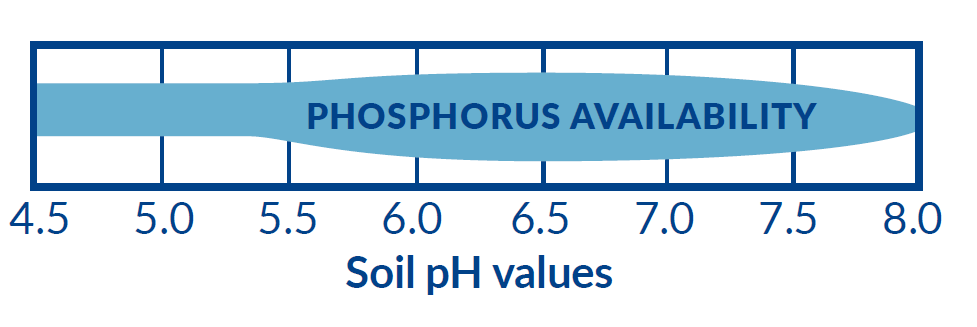Phosta is a proprietary, soil-applied agent that works to protect newly applied phosphate from soil lock-up and to release fixed forms of phosphorus present in the soil
Its novel mode of action also improves the bio-availability of other essential plant nutrients.
What does it do?
Applying Phosta to soil with adequate moisture significantly improves the availability of phosphorus by binding up calcium ions, making soil phosphate more readily available by preventing the calcium from reacting it.
It also releases trace elements such as copper and zinc, improving soil health and plant growth.
Phosphorus - Availability influenced by:
pH: Precipitated in most pHs very quickly
Moisture: Drier conditions reduce mobility and increase precipitation
Temperature: A change in soil temperature from 21°C to 13°C reduces the availability of phosphorus by 70%
Benefits
Significantly improves P availability
Releases trace elements essential for plant growth e.g. copper, zinc, manganese, molybdenum etc
Improves plant growth
Can be applied with pre-em residuals
Can be applied with a conventional crop sprayer – no need for extra costly equipment
Phosta can provide benefits to crops grown on any P index soils
Easily tank mixed and compatible with many other products
Application
Application advice
Tank mix sequence: First
Nozzle type: Medium/course or as dictated by partner pesticide
Adjuvant choice: Speak to your local Agrovista agronomist.
Application timing
In order for Phosta to be most effective it must be present in the rooting zone crop. Therefore applications prior to drilling are advised where the drill promotes incorporation of Phosta in the seed zone.
Crop | Timing | Phosta rate (l/ha) | Water volume (l/ha) |
|---|---|---|---|
Winter cereals | Pre-drilling to GS29 (end of tillering) Do not apply in frost or to cold soils. | 2.0 | 150-200 |
Spring cereals | Pre-drilling to GS29 (end of tillering) Do not apply after soils begin to dry. | 2.0 | 150-200 |
Potatoes (at planting) | Apply within the potato ridges. Low to medium calcareous soil types – 2.0 l/ha Apply without Silwet L-77. High calcareous soil situations – 4.0 l/ha Apply without Silwet L-77. | 2.0-4.0 | 200-400 |
Potatoes (over ridges) | At planting to GS07 (beginning of stem formation) Apply to beds with Silwet L-77 at 0.05% v/v | 4.0 | 200 |
Oilseed rape | Pre-drilling to GS14 (4 leaves unfolded) | 2.0 | 150-200 |
Maize | Pre-drilling to GS13 (3 leaves unfolded) | 2.0 | 200 |
Sugar beet | Pre-drilling to GS14 (4 leaves unfolded) | 4.0 | 200 |
Leaf vegetables | Pre-drilling to GS14 (4th true leaf unfolded) | 4.0 | 200 |
Root vegetables | Pre-drilling to GS14 (4th true leaf unfolded) | 4.0 | 200 |
Results
Variety | Crop | Seed type | Untreated | Phosta treated |
|---|---|---|---|---|
Cordiale | WW | Deep loam | 8.8b | 9.5a |
Santiago | WW | Silt over chalk | 10.5b | 11.1a |
Cordiale | WW | Sandy loam over chalk | 7.9a | 8.4c |
Pearl | W Barley | Calcareous clay over limestone | 7.3c | 7.7a |
Westminster | S Barley | Coarse loam over sand | 5.9a | 6.2a |
Odessy | S Barley | Sandy loam over chalk | 6.4a | 6.8b |
Kentaurus | Maize | Silty loam over clay | 3.9d* | 5.7b* |
Beacon | Maize | Course loam over sandstone | 10.3b* | 13.6a* |
Avatar | WOSR | Loamy clay over clay | 4.0d | 4.3bcd |
Quartz | WOSR | Fine loam over clay | 3.8d | 4.2c |
Russett Burbank | Potatoes | Sandy loam over chalk | 58.7e | 67.7bc |
Russett Burbank | Potatoes | Sandy loam over chalk | 57.8f | 70.8ab |
*Dry matter


